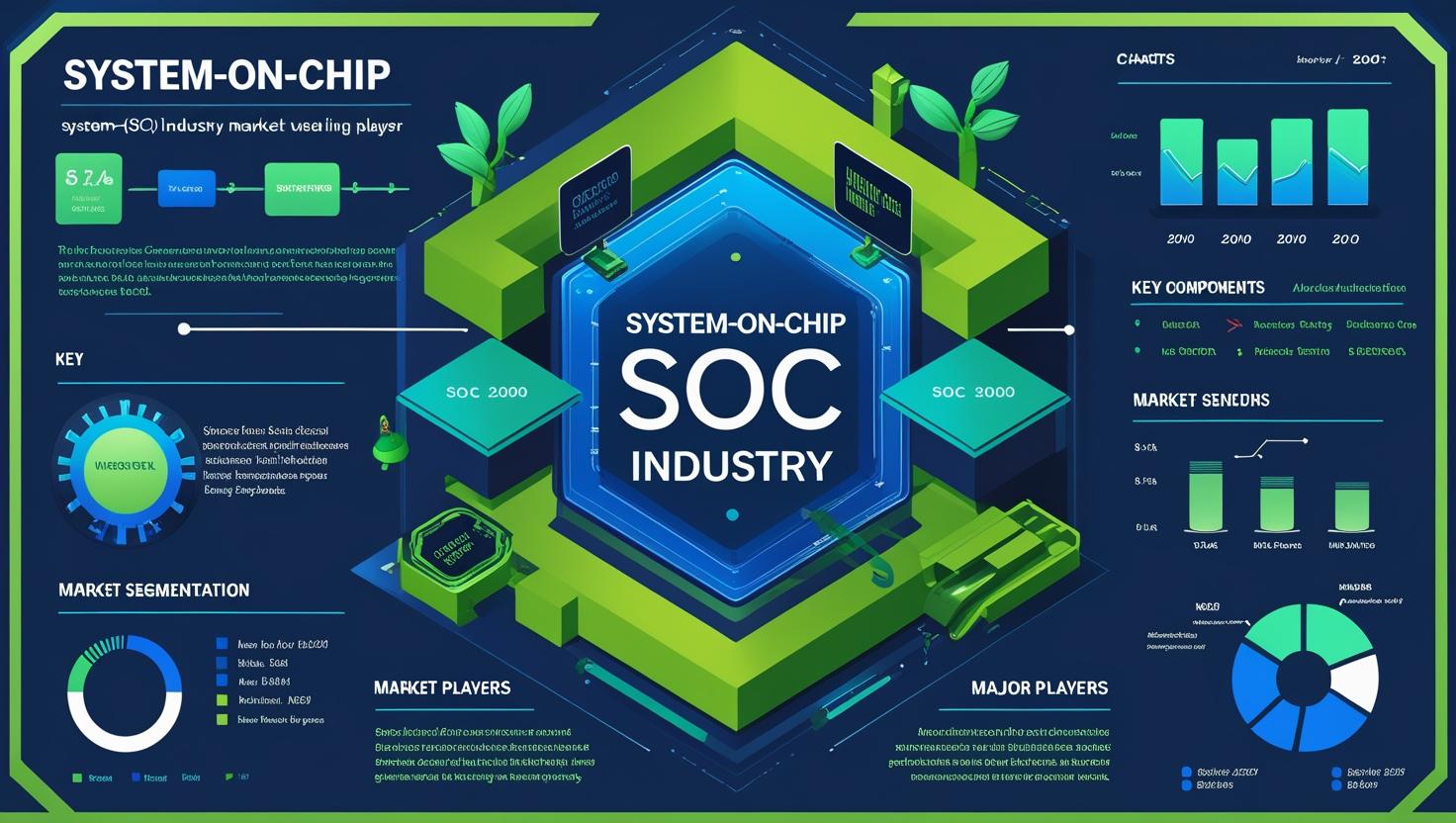System-on-Chip (SoC) technology is at the heart of the AI revolution, enabling the integration of powerful computing, memory, and communication capabilities into a single, compact chip. This innovation is transforming how artificial intelligence is deployed across a wide range of devices—from smartphones and wearables to autonomous vehicles and industrial robots. As AI workloads become more demanding and the need for energy-efficient, real-time processing increases, the evolution of SoC architecture plays a critical role in defining the next generation of intelligent devices.
Rising Demand for Edge AI Processing
One of the most significant trends driving the SoC market is the growing adoption of edge AI. Devices such as smart cameras, drones, and IoT sensors are increasingly required to process data locally rather than relying on cloud infrastructure. This need for low-latency, high-speed processing is accelerating the development of SoCs with integrated AI accelerators, including digital signal processors (DSPs), neural processing units (NPUs), and graphical processing units (GPUs). These components are tailored to handle machine learning tasks directly on the device, allowing for faster decision-making, enhanced data privacy, and reduced bandwidth usage.
Download PDF Brochure @ https://www.marketsandmarkets.com/pdfdownloadNew.asp?id=99622125

Heterogeneous Integration of Processing Units
As AI models become more complex, SoC designers are moving towards heterogeneous computing architectures that integrate multiple specialized cores on a single chip. This approach allows different types of processors—such as CPUs, GPUs, and NPUs—to work together efficiently, each optimized for specific tasks. The result is a more powerful and energy-efficient system that can handle a variety of AI workloads, including image recognition, natural language processing, and real-time analytics. Heterogeneous integration is a key enabler for AI-driven applications in sectors such as healthcare, autonomous driving, and industrial automation.
Advanced Node Manufacturing and 3D Chip Stacking
To meet the performance and power efficiency requirements of AI-driven devices, semiconductor companies are investing in advanced manufacturing technologies. SoCs are now being fabricated using smaller process nodes such as 5nm and 3nm, which allow for higher transistor density, improved performance, and lower power consumption. In addition, 3D chip stacking and advanced packaging techniques such as chiplets and system-in-package (SiP) are becoming increasingly popular. These innovations enable the stacking of memory and logic layers, significantly improving data throughput and reducing latency—crucial for real-time AI applications.
Integration of On-Chip AI Training Capabilities
While most AI chips today focus on inference, there is a growing interest in incorporating training capabilities into SoCs. This shift is driven by the need for adaptive systems that can learn and improve over time, especially in dynamic environments like robotics or personalized healthcare. SoCs with on-chip training support can update their models locally, enabling continuous learning and adaptation without requiring external processing. This development could redefine the capabilities of AI at the edge, making devices more autonomous, resilient, and intelligent.
Security and Privacy by Design
With the proliferation of AI-driven devices in everyday life, security and privacy are becoming central to SoC design. Modern SoCs are increasingly equipped with secure enclaves, hardware-level encryption, and trusted execution environments to safeguard sensitive data and prevent unauthorized access. This is especially important in applications such as biometric authentication, financial transactions, and medical diagnostics, where any breach can have serious consequences. The trend toward secure-by-design SoCs ensures that AI-powered devices are not only smart but also trustworthy.
Open-Source Hardware and AI Framework Compatibility
The rise of open-source hardware platforms like RISC-V is also influencing SoC development for AI. These platforms provide greater flexibility and innovation at lower costs, allowing developers to tailor AI chips for specific use cases. Additionally, ensuring compatibility with popular AI frameworks such as TensorFlow Lite, PyTorch Mobile, and ONNX is becoming a key design consideration. SoCs that support seamless integration with these frameworks enable faster time-to-market and greater adoption across the AI developer ecosystem.
Energy Efficiency and Thermal Management
Power consumption and heat dissipation remain critical challenges in AI-enabled SoCs, especially in compact, battery-powered devices. To address this, SoC manufacturers are implementing dynamic voltage and frequency scaling (DVFS), AI-aware power management, and thermal-aware chip design. These advancements are helping to strike a balance between performance and efficiency, making it feasible to run advanced AI models even on portable and wearable devices without compromising user experience or battery life.
Frequently Asked Questions (FAQs) on the System-on-Chip (SoC) Market
- What is a System-on-Chip (SoC)?
A System-on-Chip (SoC) is an integrated circuit that consolidates all major components of a computer or electronic system—including CPU, GPU, memory, input/output ports, and often AI accelerators—onto a single chip to improve efficiency, reduce power consumption, and minimize space.
- What are the key applications of SoCs?
SoCs are widely used in smartphones, tablets, wearables, smart home devices, autonomous vehicles, industrial automation, AI-enabled edge devices, medical electronics, and IoT systems.
- How does an SoC differ from a traditional CPU or microcontroller?
While a CPU handles processing, an SoC integrates the CPU along with other critical components like GPU, memory, and I/O interfaces into one chip, enabling compact, power-efficient designs ideal for embedded and mobile devices.
- What role does AI play in modern SoCs?
AI is a driving force in SoC innovation. Modern SoCs often include dedicated AI accelerators (NPUs, DSPs, TPUs) to efficiently run machine learning models for applications such as image recognition, voice processing, and autonomous decision-making at the edge.
- Who are the leading players in the SoC market?
Top SoC manufacturers include Qualcomm, Apple, Intel, NVIDIA, AMD, Samsung Electronics, MediaTek, Broadcom, and Huawei (HiSilicon). Emerging players are also building SoCs based on RISC-V and open-source architectures.
See The Latest Semiconductor Reports:
Edge AI Hardware Market by Device, Processor (CPU, GPU, and ASIC), Function, Power Consumption (Less than 1 W, 1-3 W, >3-5 W, >5-10 W, and More than 10 W), Vertical and Region – Global Forecast to 2030
Embodied AI Market by Product Type [Robots (Humanoid Robots, Mobile Robots, Industrial Robots, Service Robots, Cobots), Exoskeletons, Autonomous Systems, Smart Appliances], Level of Embodiment (Level 1, Level 2, Level 3) – Global Forecast to 2030
